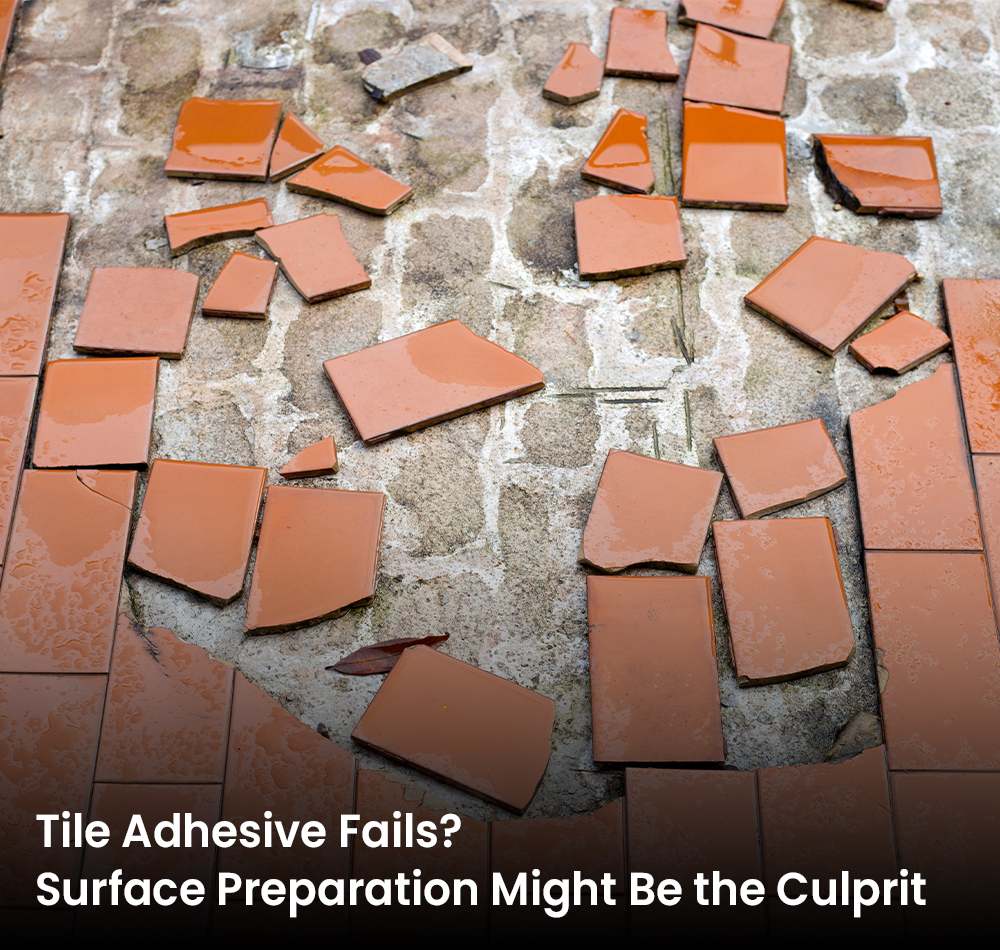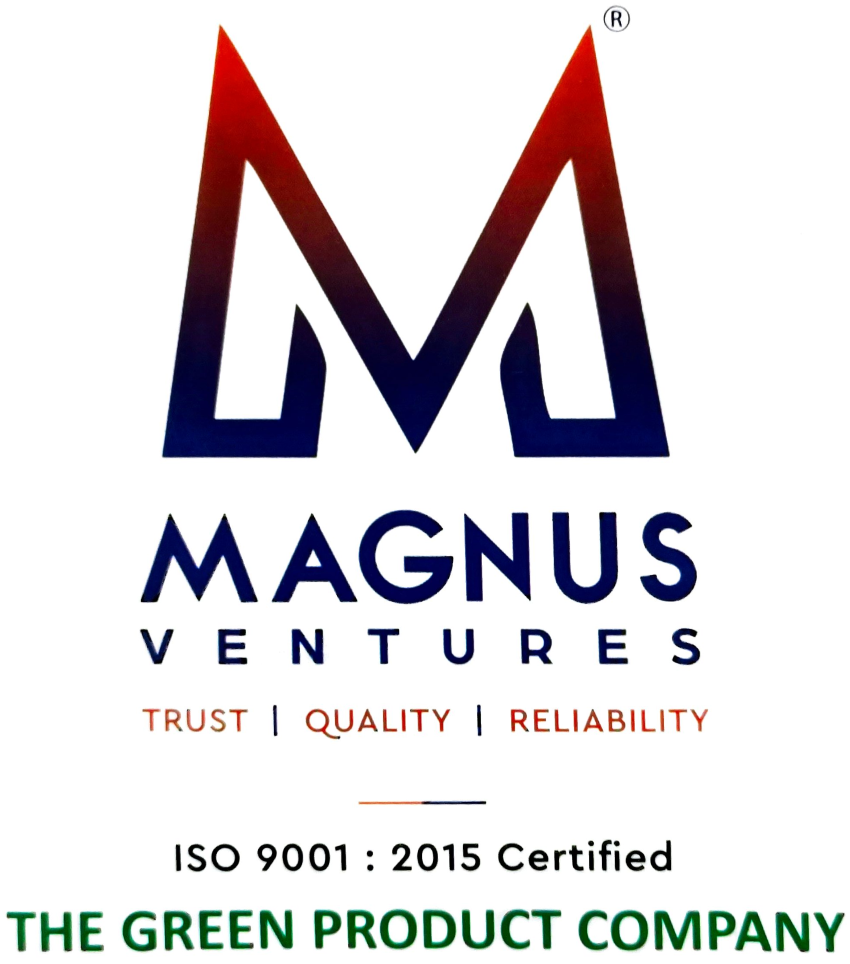
Although tile adhesive uses bonding strength to keep a tile firmly in place, it can still fail at serving this purpose because of one very common mistake.
This goes without saying, but tile installation is undoubtedly the most important aspect of any construction or renovation project. Skillfully executed tile execution will render you results that are both pleasing to the eye and last for years to come. That said, all of your efforts during the initial installation will be for nothing if there is an adhesive failure.
This failure could be anything, from loose tiles to cracks appearing on them. When faced with such a crisis, most folks tend to lay the blame on the adhesive itself, completely ignoring the fact that maybe the problem began with poor surface preparation.
You could be using the best tile adhesive in the industry, and yet experience failure if you were careless during surface preparation.
In this article, we would like to shed light on this very important concern and address things you can do for flawless surface prep.
Tile Adhesive Failure Explained
Tile adhesive failure is an issue that’s more common than one might imagine. This issue of tiles popping off, cracking, or emitting hollow sounds is one that’s proven to be costly for many folks over the years. You could blame many factors for this problem. It could be because of heavy moisture build-up or maybe the adhesive wasn’t applied properly.
That said, one issue that isn’t brought up in discussions is that of improper surface preparation. You could be using a high-end tile adhesive from the best supplier in town and still experience failure if mistakes were made during surface prep.
Common Faults during Surface Preparation that Can Lead to Tile Adhesive Failure
A typical surface-prep routine entails cleaning up the surface on which you will go on to place a tile. You’ll need to make sure it is dry if there is moisture on it. You also need to ensure this surface is compatible with the tile adhesive you are about to use. Furthermore, it is also important to consider the unique characteristics each surface type possesses before you start working on it.
For example, you’ll need to make sure a high-moisture screed is completely dried up before you can start tile installation. The problems begin when you make the following mistakes:
1. Not cleaning up the surface
Your substrate is bound to be a mess before you start working on it. You want to make sure it is free from grime, oil, wax, dust, or any type of loose particles before an adhesive is applied. Any contaminants on the surface will affect the adhesive’s bonding strength, eventually leading to tile failure.
2. Ignoring moisture
This is a major and one of the leading causes of tile failure, especially when it comes to cement-based screeds. Debonding is inevitable with high moisture on a substrate. You want to make sure the surface is completely dried up before moving on to the next crucial step.
3. Dealing with irregular surfaces
It is a gargantuan challenge to apply an adhesive properly on an uneven surface. There are going to be spots beneath the tile that will miss the adhesive’s effect. This compromises the bonding strength, which in turn results in the tiles cracking.
A flat surface is imperative, especially when you are installing large tiles. You’ll need a good-quality levelling compound or screeds to get a smooth, stable surface ideal for tile installation.
4. Not giving the surface enough time to cure.
Some surfaces, like concrete and cement screeds, tend to shrink as they cure. This will lead to stress being developed in the adhesive. We cannot stress this enough, but you must let the substrate completely cure. The curing period will vary from one surface to another, with most requiring at least 7 days.
If you don’t want the tile to crack, it would be best to be patient and wait to continue your tiling efforts until the surface has cured.
5. Not considering substrate compatibility
Direct tiling isn’t suitable for all substrates. For instance, wooden surfaces need to be primed to ensure there are no movement-related failures down the line. It is imperative that you choose an adhesive that is compatible with the surface and the type of tile you are using. That said, even a compatible adhesive will fail if the surface wasn’t prepped properly.
Tips to Get Surface Preparation Right
Needless to say, if you want to avoid a tile-adhesive failure, flawless surface preparation is key. Here’s how you do it:
1. Clean the surface
Get rid of any dust, grime, oil, and wax from your surface. Vacuum your surface or acid-wash it to ensure that not a single contaminant remains.
2. Pay heed to those moisture levels
You’ll need to control the moisture levels on your surface. Use a moisture meter to keep tabs on this element. You don’t want the moisture levels shooting through the roof. Make sure your surface is dry.
3. Surface levelling
If the surface is uneven or if there are cracks on it, you want this taken care of. The best way to do so is via a levelling compound or screed.
4. Priming
You can improve a substrate’s adhesion and reduce its porosity by applying a good-quality primer. Besides enhancing its bonding strength, the primer will also ensure the surface is stable.
5. Bolster the substrate’s structure
You want to stabilize your surface before tiling begins. If there are cracks, fill them up with mortar. Also, give the surface enough curing time. You want to make sure your surface is as structurally sound as possible to avoid any shrinkage-related issues later.
6. Choosing the right adhesive
Finally, make sure you are using an adhesive that’s compatible with the surface as well as the type of tile being used.
The Imperative Role Screeds Play During Surface Preparation
Stabilizing a substrate or levelling it is a major challenge during surface prep. This is a challenge that can be handled with a specialized product. What you need is a high-performance, self-leveling screed that can easily address some of the most prominent challenges during tile installation. That is exactly what you get with Magnus Ventures’ M-Screed.
These are just some of the features that make M-Screed special
- M-Screed is formulated to cure naturally, no curing compounds or water required.
- It greatly reduced the risk of tile cracking by exhibiting minimal drying shrinkage.
- This substance is engineered to exhibit high resistance to cracks under both mechanical and thermal stress.
- M-Screed guarantees a surface that is smooth and stable, which is essential for strong adhesion.
Conclusion
Tile adhesive failures are mere symptoms of a large problem that points to inadequate surface preparation. This is an issue you can avoid by being meticulous when first preparing a surface. All you have to do is make sure your surface is clean, any irregularities are addressed, moisture levels are controlled, and your substrate is compatible with the adhesive being applied.
If you want to really bolster the foundation of your tiling project, we suggest you employ M-Screed, a high-quality, cement-based screed developed by one of the finest tile adhesive suppliers in the country – Magnus Ventures.

